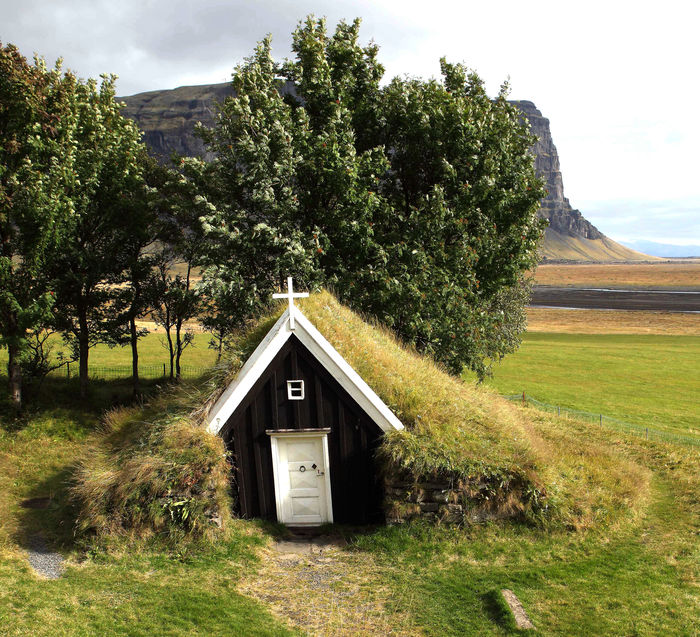Oratory in Núpsstaður
Closed to public visiting
The prayer house at Núpsstaður is a turf house, thought to have been built around the mid-19th century after extensive modifications to an older building.
At Núpsstaður, there was a church that, according to historical records dating back to 1340, is associated with Saint Nicholas. The church appears to have been well maintained throughout the centuries until the 16th century. Around 1650, a new church was built on the site, and it is believed that the prayer house is partly made from materials from that church.
The current house is likely slightly smaller than its predecessor. The prayer house measures 5.2 meters in length and 2.2-2.5 meters in width, widening at the choir end. The long walls are about 2.5 meters thick, made of stone and turf. The eastern gable is half-height, while the upper half has small four-pane windows. The western gable is full-height, and above the door is a two-pane window. The house has black tar-coated walls and turf roofing. The house was used for various purposes, including as a shelter, but it was commonly referred to as the prayer house. It was declared a protected national monument in 1930, the first of its kind in the country. Extensive restoration work was carried out by the National Museum of Iceland between 1958 and 1960, and it was consecrated for church use with a service in 1961.
The Núpsstaður Prayer House is part of the significant architectural ensemble at the site.
Núpsstaður is the easternmost village in Fljótshverfi, located just west of Lómagnúpur.
